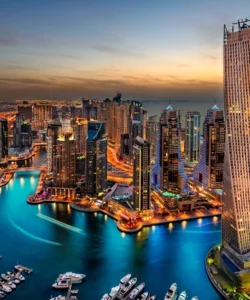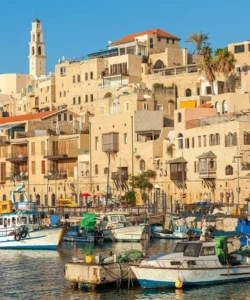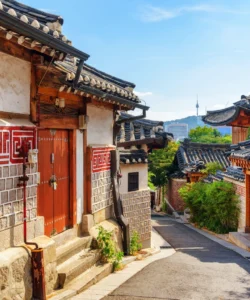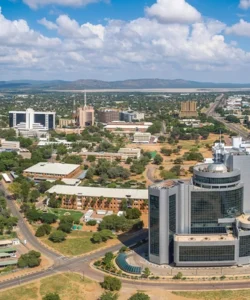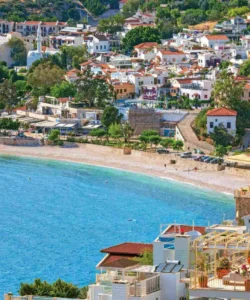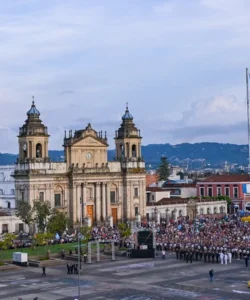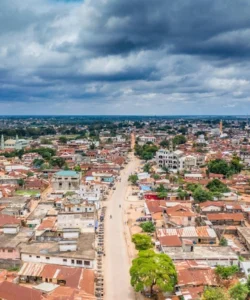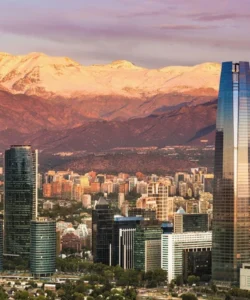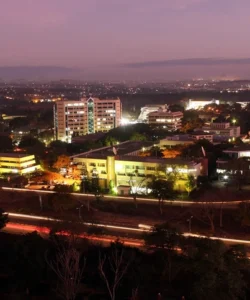Malta, officially the Republic of Malta, is an island nation in the Mediterranean Sea. An archipelago comprising three main islands – Malta, Gozo, and Comino – it is renowned for its strategic historical importance, ancient megalithic temples, stunning coastline, and a unique blend of cultures.
![]()
Area and Population:
Malta covers a total area of approximately 316 km² (122 sq mi). As of early 2025, its population is estimated to be around 545,000 inhabitants, making it one of the most densely populated countries in the world.
Capital:
The capital city of Malta is Valletta.
Major Cities/Towns:
Given its small size, Malta’s urban areas often blend into one another. Besides Valletta, other significant towns and cities include Birkirkara (the most populous), Qormi, Mosta, Sliema, St. Julian’s, and Victoria (Rabat) on Gozo.
Language:
Malta has two official languages:
- Maltese: A unique Semitic language with strong Romance influences, derived from a dialect of Arabic.
- English: A legacy of British rule, widely spoken and understood across the islands.
Italian is also commonly spoken, especially among older generations.
Currency:
As a member of the European Union, Malta uses the Euro (€) as its official currency.
Religion:
The dominant religion in Malta is Roman Catholicism, with the vast majority of the population identifying as Catholic. Catholicism plays a significant role in Maltese culture and public life. There are smaller communities of other Christian denominations, Muslims, and others.
Attractions and Wonders:
- Valletta Old City: A UNESCO World Heritage site, the fortified capital city is a masterpiece of Baroque architecture, with narrow streets, grand buildings, and stunning views of the harbors.
- St. John’s Co-Cathedral, Valletta: A magnificent Baroque church, renowned for its ornate interior, Caravaggio’s masterpiece “The Beheading of Saint John the Baptist,” and a stunning marble floor.
- Megalithic Temples of Malta: A UNESCO World Heritage site, these prehistoric stone structures (e.g., Ħaġar Qim, Mnajdra, Tarxien Temples) are among the oldest free-standing structures in the world, predating the pyramids of Egypt.
- Ħal Saflieni Hypogeum, Paola: A UNESCO World Heritage site, this is a unique prehistoric underground burial complex carved out of rock, dating back to 4000-2500 BC. (Book well in advance, limited access).
- Mdina (The Silent City): A charming fortified medieval city, with narrow winding streets, ancient palaces, and panoramic views from its bastions.
- Gozo Island: Malta’s sister island, known for its more tranquil atmosphere, rugged landscapes, Dwejra Bay (site of the former Azure Window), Ramla Bay (red sand beach), and the Ggantija Temples.
- Comino and the Blue Lagoon: A tiny, almost uninhabited island famous for its crystal-clear turquoise waters, perfect for swimming and snorkeling.
- Three Cities (Vittoriosa, Senglea, Cospicua): Historic fortified cities across the Grand Harbour from Valletta, offering a glimpse into Malta’s maritime past.
- Marsaxlokk Fishing Village: A picturesque traditional fishing village famous for its colorful “luzzu” boats and vibrant Sunday fish market.
- Popeye Village, Mellieħa: The original film set for the 1980 “Popeye” movie, now a quirky and popular tourist attraction.
- Dingli Cliffs: The highest point in Malta, offering dramatic coastal views and beautiful sunsets.
Architecture:
Maltese architecture is a unique fusion of Mediterranean, European, and North African influences, reflecting its long and complex history:
- Megalithic: The prehistoric temples showcase astounding engineering with massive stone blocks.
- Phoenician, Roman, and Byzantine: Vestiges can be found in archaeological sites.
- Medieval: Evident in the narrow streets and defensive walls of Mdina and some older parts of Valletta.
- Baroque: The predominant style in Valletta and many other towns, introduced by the Knights of St. John, characterized by ornate facades, grand churches, and a sense of theatricality. Local limestone (globigerina limestone) gives buildings a warm, honey-colored hue.
- British Colonial: Public buildings and residential areas from the British period (19th-20th century) show influences of neoclassical and Victorian styles.
- Traditional Maltese Townhouses: Distinctive for their enclosed wooden balconies (gallarija) that are a common feature.
- Modern and Contemporary: New developments, particularly in tourist hubs like Sliema and St. Julian’s, showcase contemporary architectural trends, sometimes contrasting with the historic urban fabric.
Roads:
Malta has a relatively dense road network given its small size. While generally navigable, driving can be challenging due to narrow roads, heavy traffic, and local driving habits.
- Main Arterial Roads: Connect major towns and tourist areas. These have seen significant upgrades in recent years, improving flow.
- Rural Roads: Smaller roads, especially in the countryside or older villages, can be very narrow, winding, and sometimes in poorer condition.
- Traffic: Traffic congestion is common, particularly in urban areas and during peak hours.
- Driving Side: Malta drives on the left-hand side of the road, a legacy of British rule.
- Parking: Finding parking, especially in historic centers like Valletta and Mdina, can be very challenging. Public transport or taxis are often recommended for these areas.
While driving offers flexibility to explore the islands, consider local buses or ride-sharing services for urban areas.
Hotels:
Malta offers a wide range of accommodation options, catering to diverse preferences and budgets, reflecting its popularity as a tourist destination.
- Luxury and 5-Star Hotels: Concentrated in coastal areas like St. Julian’s, Sliema, and some in Valletta, offering high-end amenities, pools, and sea views. Many international hotel chains have a presence.
- Boutique Hotels: Numerous charming and stylish boutique hotels have opened in recent years, especially in Valletta and Mdina, often housed in beautifully restored historic buildings.
- Resorts: Larger resorts, many with all-inclusive options, are found along the coast, particularly catering to families and sun-seekers.
- Apartments and Holiday Rentals: A very popular choice, offering self-catering options and often good value, especially on Gozo.
- Farmhouses (on Gozo): Traditional Gozitan farmhouses, often with private pools, are popular for a more tranquil and authentic stay.
- Mid-Range and Budget Hotels: A good selection of affordable options is available across the islands.
Restaurants and Cuisine:
Maltese cuisine is a fascinating fusion of Mediterranean, Sicilian, North African, and British influences, characterized by fresh seafood, local produce, and hearty flavors.
- Fenek (Rabbit): The national dish, often served stewed (stuffat tal-fenek) or fried with garlic and wine.
- Pastizzi: Flaky pastry filled with either ricotta cheese (pastizzi tal-irkotta) or mushy peas (pastizzi tal-piżelli). A beloved and inexpensive street food.
- Lampuki Pie (Torta tal-Lampuki): A savory pie made with dorado fish (lampuki), vegetables (spinach, cauliflower, olives, capers), and pastry.
- Stuffat tal-Qarnit: Octopus stew, slow-cooked in a rich tomato and wine sauce.
- Aljotta: A traditional Maltese fish soup, usually light and flavorful.
- Ftira (Ħobż biż-Żejt): A traditional Maltese flatbread, often served with olive oil, tomatoes, tuna, capers, and onions. A popular snack or light meal.
- Gbejniet: Small round cheeselets, made from sheep’s or goat’s milk, served fresh, dried, or peppered.
- Hobż Malti: Traditional Maltese sourdough bread, known for its thick crust and soft interior.
- Kapunta: A local version of caponata, a sweet and sour vegetable relish.
- Imqaret: Date-filled pastries, deep-fried and often served with ice cream.
- Bigilla: A broad bean dip, typically served with galletti (Maltese crackers).
Drinks:
- Kinnie: A local bittersweet carbonated soft drink made from bitter oranges and aromatic herbs.
- Cisk: A popular local lager beer.
- Local Wine: Maltese vineyards produce a range of wines, primarily from local grape varieties (Gellewża and Girgentina) and international ones.
- Ħelwa tat-Tork: A sweet confection similar to halva.
Dining experiences range from casual “pastizzerias” and traditional Maltese restaurants to upscale fine dining establishments, especially in Valletta and the more tourist-oriented areas. Fresh, seasonal ingredients are a hallmark of Maltese cooking.

